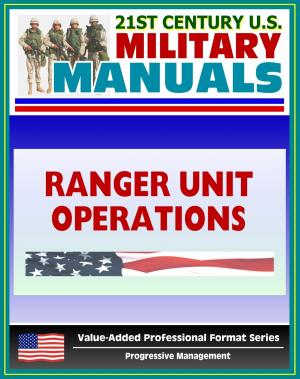On Target: Organizing and Executing the Strategic Air Campaign Against Iraq, The USAF in the Persian Gulf War - Kuwait Crisis, Desert Shield, Desert Storm, Offensive Air Campaign, Great Scud Hunt
Nonfiction, History, Middle East, Persian Gulf War, Military, Aviation| Author: | Progressive Management | ISBN: | 9781310772825 |
| Publisher: | Progressive Management | Publication: | July 24, 2015 |
| Imprint: | Smashwords Edition | Language: | English |
| Author: | Progressive Management |
| ISBN: | 9781310772825 |
| Publisher: | Progressive Management |
| Publication: | July 24, 2015 |
| Imprint: | Smashwords Edition |
| Language: | English |
Professionally converted for accurate flowing-text e-book format reproduction, this Air Force publication is focused on the "offensive air campaign against Iraq," a term implying that the strategic phase of the air campaign that attacked military and economic targets in Iraq proper was part of a larger overall air operation. The author also uses the term "strategic air campaign" sometimes interchangeably with "offensive air campaign" to refer to the strategic phase of the campaign, not the overall campaign. No air operation occurs in a vacuum, especially one involving the vast geographic distances of the theater of operations and the numerous military units supplied by the Coalition partners. The author, therefore, has made a thorough effort to place the Persian Gulf War in its larger political and military context to explain the motivations behind the Coalition's conduct of the campaign. The professionalism of the USAF also profoundly affected the conduct of operations. It is important to understand that the unprecedentedly high morale, discipline, and training of U.S. servicemen and women, which rested to some extent upon honoring local customs and the strictures of Islam and to a greater extent on the all-volunteer military, had a positive effect on operations.
The extraordinary air plan, hastily developed for the strategic phase of the campaign by the Air Staff, provided the linchpin for this narrative. The underlying targeting philosophy of the plan, not necessarily all its details, drove the final prewar preparations and directed much of the first ten days of the war, as well as heavily influenced air operations to the conflict's end. The plan's goals and objectives, drawn up by airmen and approved by the national leadership, provide a ready-made yardstick for judging the USAF's performance in the strategic air phases of operations against Iraq. Neither in the light of operations in the Balkans nor those in Afghanistan in the decade since this work's creation has the author found reason to change his original conclusions as expressed here.
1: The Kuwait Crisis and the Decision to Intervene * 2: The Initial Deployment * 3: The Offensive Air Campaign Plan * 4: The Offensive Deployment, Morale, and Training * 5: The Decision for War * 6: Thunder and Hail over Baghdad: The Initial Attacks * 7: Weather and the Great Scud Hunt * 8: Continuing the Air Offensive against Iraq * 9: Assessment
Stealth air combat operations, inaugurated en masse in the Gulf War, became even more prevalent with the introduction of the B-2 bomber. Likewise, the use of precision weapons grew. The aversion of western democracies to both military and civilian casualties and their effect on targeting, tactics, and strategy first encountered over Iraq became more pronounced in subsequent conflicts—as did the continuing challenge in matching accurate intelligence to precision weapons. Because of these enduring trends, study of the Persian Gulf War will continue to offer members of the service and the public valuable insights and information applicable to current military affairs.
Professionally converted for accurate flowing-text e-book format reproduction, this Air Force publication is focused on the "offensive air campaign against Iraq," a term implying that the strategic phase of the air campaign that attacked military and economic targets in Iraq proper was part of a larger overall air operation. The author also uses the term "strategic air campaign" sometimes interchangeably with "offensive air campaign" to refer to the strategic phase of the campaign, not the overall campaign. No air operation occurs in a vacuum, especially one involving the vast geographic distances of the theater of operations and the numerous military units supplied by the Coalition partners. The author, therefore, has made a thorough effort to place the Persian Gulf War in its larger political and military context to explain the motivations behind the Coalition's conduct of the campaign. The professionalism of the USAF also profoundly affected the conduct of operations. It is important to understand that the unprecedentedly high morale, discipline, and training of U.S. servicemen and women, which rested to some extent upon honoring local customs and the strictures of Islam and to a greater extent on the all-volunteer military, had a positive effect on operations.
The extraordinary air plan, hastily developed for the strategic phase of the campaign by the Air Staff, provided the linchpin for this narrative. The underlying targeting philosophy of the plan, not necessarily all its details, drove the final prewar preparations and directed much of the first ten days of the war, as well as heavily influenced air operations to the conflict's end. The plan's goals and objectives, drawn up by airmen and approved by the national leadership, provide a ready-made yardstick for judging the USAF's performance in the strategic air phases of operations against Iraq. Neither in the light of operations in the Balkans nor those in Afghanistan in the decade since this work's creation has the author found reason to change his original conclusions as expressed here.
1: The Kuwait Crisis and the Decision to Intervene * 2: The Initial Deployment * 3: The Offensive Air Campaign Plan * 4: The Offensive Deployment, Morale, and Training * 5: The Decision for War * 6: Thunder and Hail over Baghdad: The Initial Attacks * 7: Weather and the Great Scud Hunt * 8: Continuing the Air Offensive against Iraq * 9: Assessment
Stealth air combat operations, inaugurated en masse in the Gulf War, became even more prevalent with the introduction of the B-2 bomber. Likewise, the use of precision weapons grew. The aversion of western democracies to both military and civilian casualties and their effect on targeting, tactics, and strategy first encountered over Iraq became more pronounced in subsequent conflicts—as did the continuing challenge in matching accurate intelligence to precision weapons. Because of these enduring trends, study of the Persian Gulf War will continue to offer members of the service and the public valuable insights and information applicable to current military affairs.















